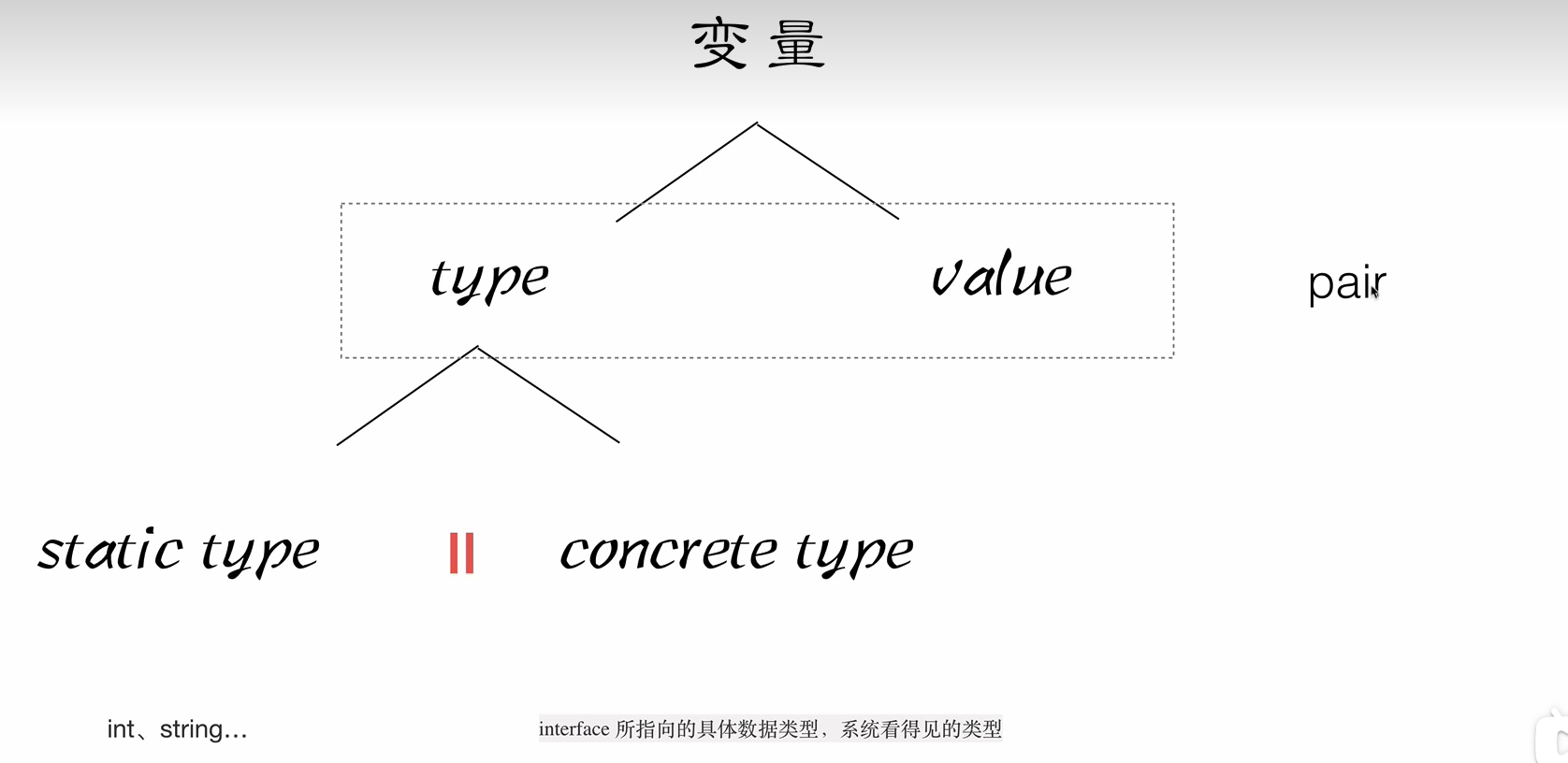 反射
反射
# pair

# reflect 包
func main() {
var a interface{}
a = 10
fmt.Println(a)
// 类型断言
value, ok := a.(int)
if ok {
fmt.Println(value)
} else {
fmt.Println("类型断言失败")
}
// 反射
// 获取变量的类型
fmt.Println(reflect.TypeOf(a)) // int
// 获取变量的值
fmt.Println(reflect.ValueOf(a)) // 10
// 获取变量的类型
typeOfA := reflect.TypeOf(a)
fmt.Println(typeOfA.Name(), typeOfA.Kind()) // int int
// 获取变量的值
valueOfA := reflect.ValueOf(a)
fmt.Println(valueOfA.Int()) // 10
}
reflect.TypeOf():获取变量的类型reflect.TypeOf().Name():获取变量的类型,转换为 string 类型reflect.TypeOf().Kind():获取变量的类型,转换为枚举类型reflect.ValueOf():获取变量的值reflect.ValueOf().Int():获取变量的值,转换为 int 类型
更多反射的使用方法,参考 Go 语言反射 (opens new window)
# 结构体标签(类似注解)
type Person struct {
Name string `json:"name"`
Age int `json:"age"`
}
- 结构体标签的本质是一个字符串
- 结构体标签的格式:
key:"value" - 结构体标签的使用:
reflect.TypeOf().Field().Tag.Get("key")
func main() {
var a interface{}
a = Person{"张三", 18}
fmt.Println(a)
// 反射
// 获取变量的类型
typeOfA := reflect.TypeOf(a)
fmt.Println(typeOfA.Name(), typeOfA.Kind()) // Person struct
// 获取变量的值
valueOfA := reflect.ValueOf(a)
fmt.Println(valueOfA.Field(0).String()) // 张三
fmt.Println(valueOfA.Field(1).Int()) // 18
// 获取结构体标签
fmt.Println(typeOfA.Field(0).Tag.Get("json")) // name
fmt.Println(typeOfA.Field(1).Tag.Get("json")) // age
}
应用场景:JSON 序列化
type Movie struct {
Title string `json:"title"`
Year int `json:"year"`
Price int `json:"rmb"`
Actors []string `json:"actors"`
}
func main() {
movie := Movie{
Title: "肖申克的救赎",
Year: 1994,
Price: 100,
Actors: []string{"蒂姆·罗宾斯", "摩根·弗里曼", "鲍勃·冈顿"},
}
// 序列化 JSON字符串
data, err := json.Marshal(movie)
if err != nil {
fmt.Println("序列化失败")
return
}
fmt.Printf("%s\n", data)
// 反序列化
var movie2 Movie
err = json.Unmarshal(data, &movie2)
if err != nil {
fmt.Println("反序列化失败")
return
}
fmt.Println(movie2)
}
控制台输出:
{"title":"肖申克的救赎","year":1994,"rmb":100,"actors":["蒂姆·罗宾斯","摩根·弗里曼","鲍勃·冈顿"]}
{肖申克的救赎 1994 100 [蒂姆·罗宾斯 摩根·弗里曼 鲍勃·冈顿]}
应用场景:ORM
略
上次更新: 2024/03/11, 22:37:05
